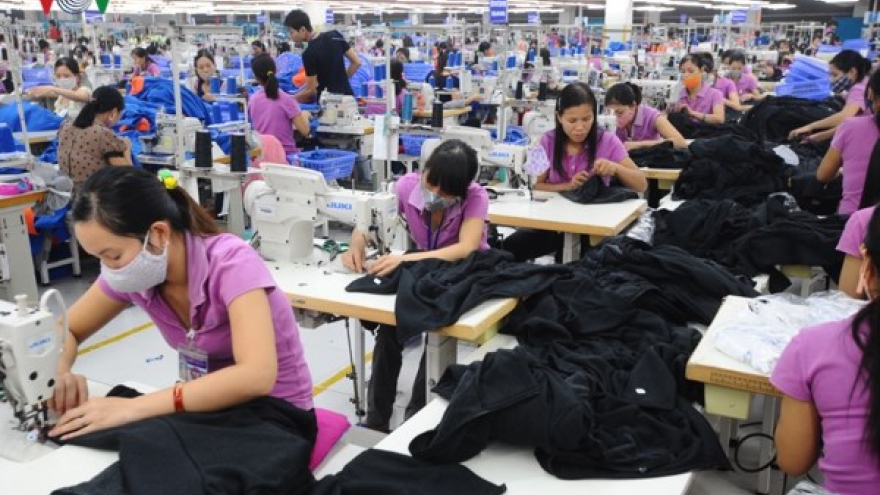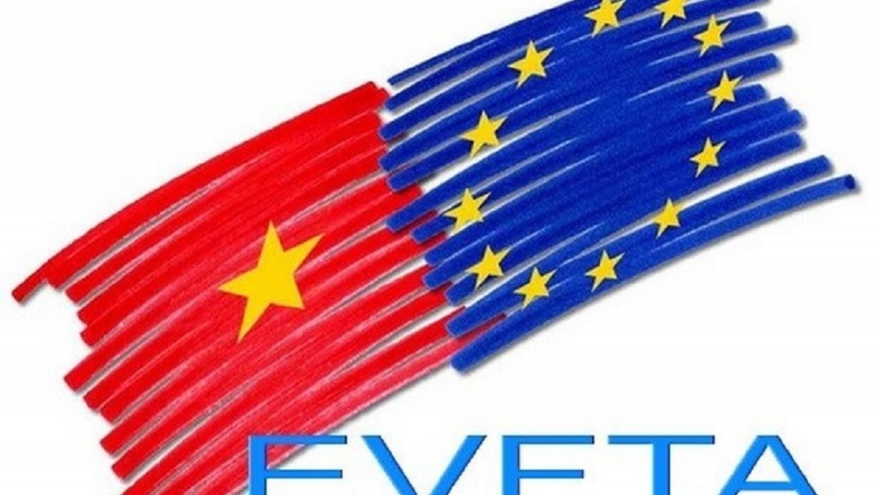EVFTA, EVIPA poised to navigate innovation playground
VOV.VN - Local firms should increase their levels of technological innovation and administrative capacity in order to meet quality requirements of EU importers, while sketching out a long-term strategy for the implementation of the EU - Vietnam Free Trade Agreement, rather than taking a short-sighted approach to their benefits, experts have said.
 |
| Domestic firms are advised to sketch out long-term business strategies, boost their investment in technical renovation, and focus on upskilling their workforce, in order to seize opportunities from the EVFTA. (Illustrative photo: VOV) |
Vu Dai Thang, Deputy Minister of Planning and Investment, said the EU - Vietnam Free Trade Agreement (EVFTA) and the EU - Vietnam Investment Protection Agreement (EVIPA), which were both inked in Hanoi on June 30, will further facilitate EU firms to penetrate into, not only the Vietnamese market, but also ASEAN and CPTPP member countries.
He asserted that the two deals would help Vietnam lure additional capital inflows of investors from EU member countries and others.
Many domestic firms are expecting their revenues to double thanks to the potentially soaring exports to the EU when the EVFTA takes effect.
EU markets have pledged to eliminate up to 99 per cent of tariff lines for Vietnamese goods as stated in the trade deal. A 10-year tariff elimination roadmap will be set forth for certain imports while Vietnamese farm products shipped to the trading bloc are to be immune from non-tariff barriers and quotas.
The EVFTA is believed to bolster public procurement and services between both sides, including those dedicated to postal, banking, and maritime services.
Nguyen Mai, chairman of the Vietnam Association of Foreign Invested Enterprises, said the EVFTA will bring about fresh opportunities for local firms to collaborate with EU partners.
Foreign direct investment (FDI) from the EU into Vietnam is forecast to soar in the near future as the implementation of the EVFTA will help ease concerns from EU investors, particularly those in relation to intellectual property protection and the rights of laborers. This will navigate sustainable development and the country’s FDI attraction policy in line with overall national development and Industry 4.0 trends.
Mai raised concerns about the fierce competition caused by the impending wave of EU imports to the Vietnamese market as these products are both of high quality and competitive prices in comparison to those provided by domestic firms. Therefore, if local firms fail to enhance technological innovation, develop new product models, and improve product quality to gain a competitive advantage over their EU rivals, they could sustain losses and significantly increase their risk of bankruptcy.
The trading bloc has reportedly imposed stringent rules on its imports, especially technical barriers and anti-dumping regimes aimed at restricting the import growth of goods from one country.
For its key export staples, the EU normally requests tariff cuts from its trading partners and the elimination of subsidy from partner countries, Mai said. He added that in order to benefit from the EU’s tariff incentives, Vietnamese firms must completely abide by the origin rules set by the bloc.
The chairman suggested the domestic business circle should actively update information regarding tariff cutting roadmaps outlined by both sides, relating to product origin, technical specifications, labour, and the environment. This will allow them to sketch out long-term business strategies, boost their investment in technical renovation, and focus on upskilling their workforce.
Firms were advised to proactively seek and nurture partnerships with EU firms and strictly comply with the bloc’s trade and investment regulations.
Do Manh Hung, head of the Association of Vietnamese Enterprises in Germany, said the EVFTA and EVIPA are significant for protecting investors. For instance, Vietnamese investors will be protected under the pacts when making investment in Germany and other EU member states, Hung noted.
However, the most challenging issue for Vietnamese exporters is how to meet technical regulations prescribed in the EVFTA. EU importers levy high quality standards and strict rules on imports, especially those related to food hygiene.
Vietnam’s apparel sector is thought to obtain a large number of benefits from the EVFTA as many Vietnamese garment and textile brands have successfully conquered EU markets.
Local garment firms should be well prepared to deal with fierce competition from Bangladeshi and Indian rivals that are seeking ways to boost their exports to Germany.
Germany represents a demanding market that has stern regulations on imported goods, therefore if Vietnamese garment enterprises are able to make inroads into the German market, this could serve as a broader gateway to others across the EU.


